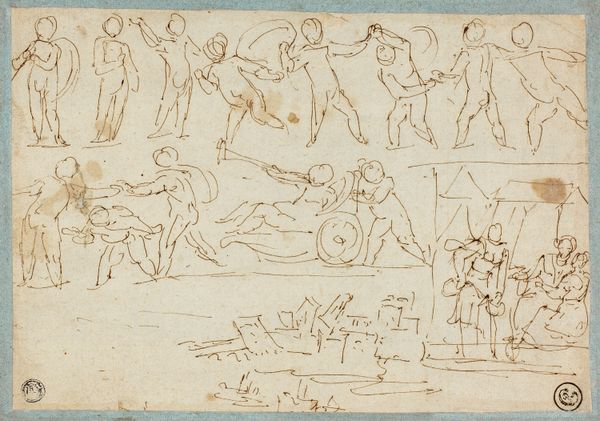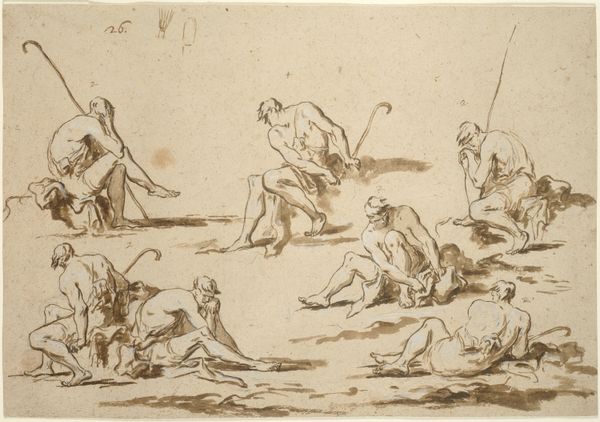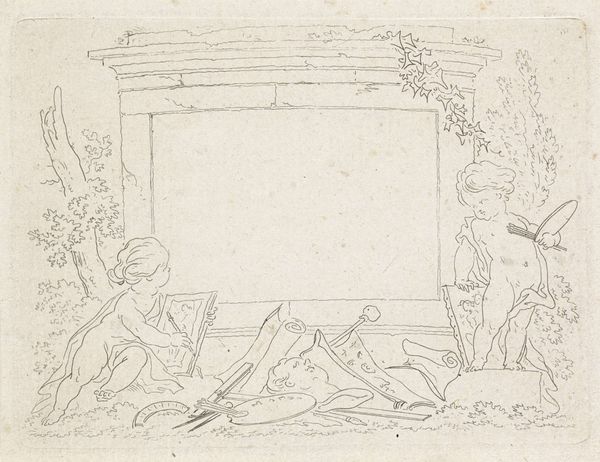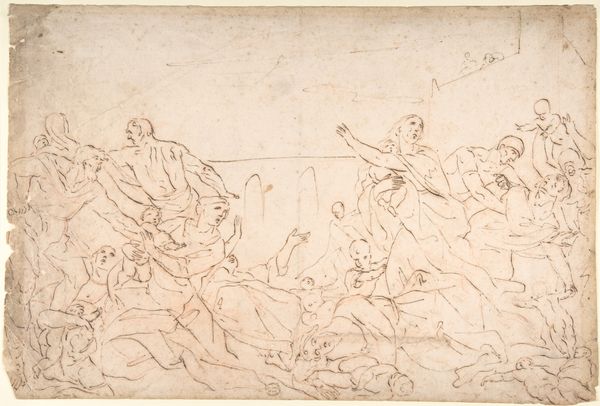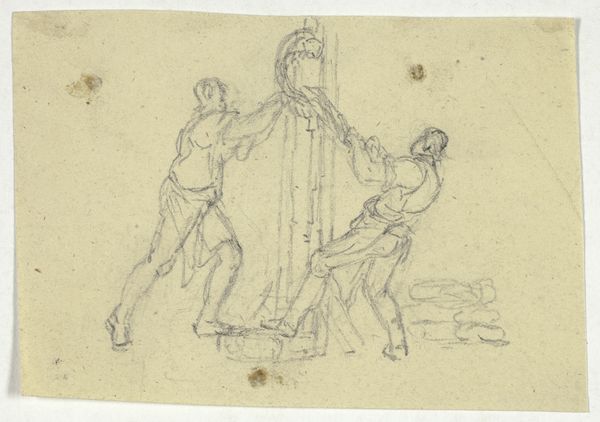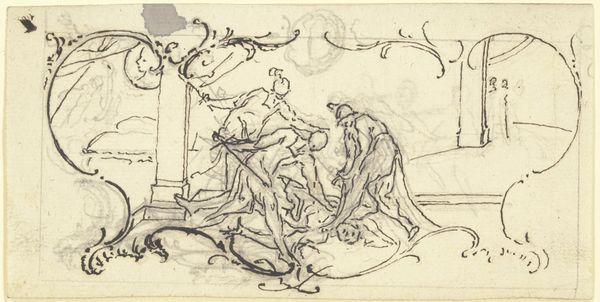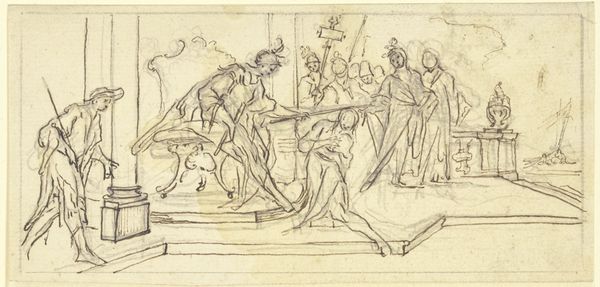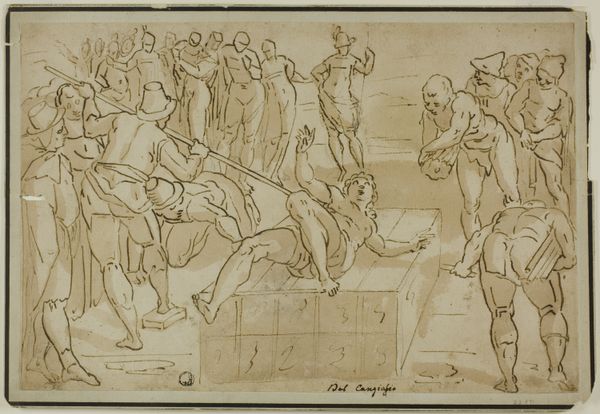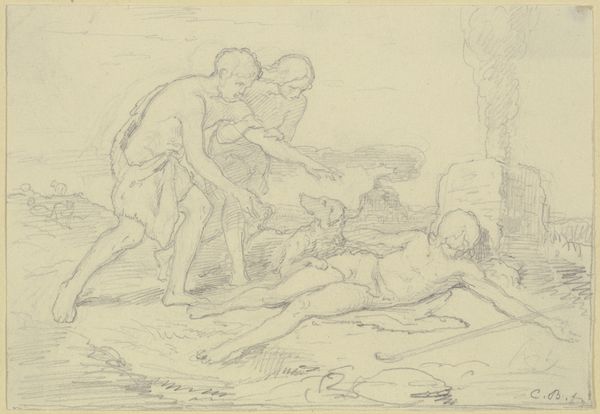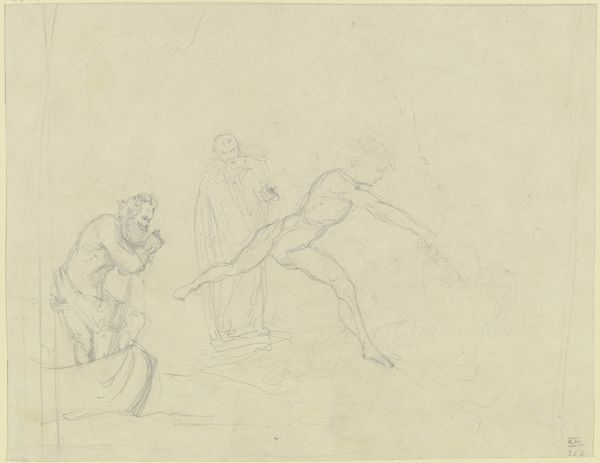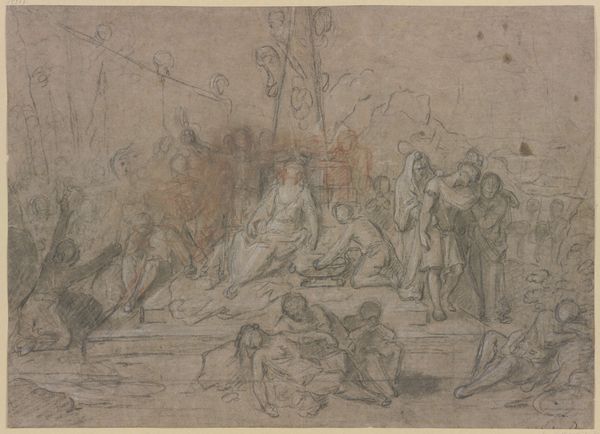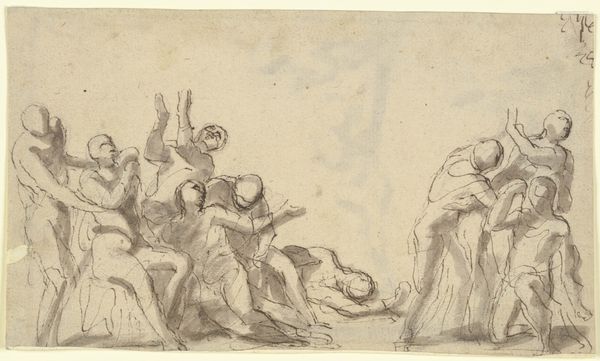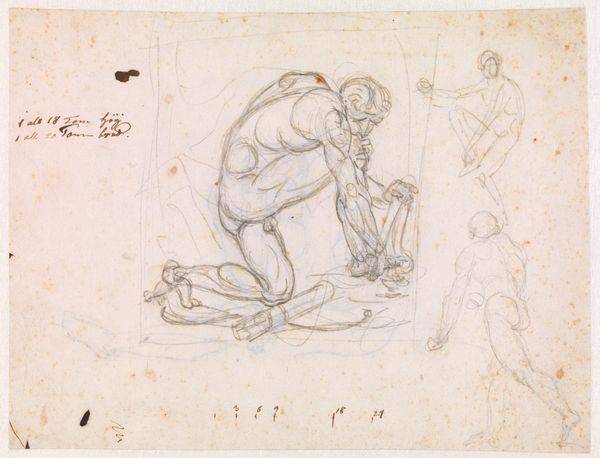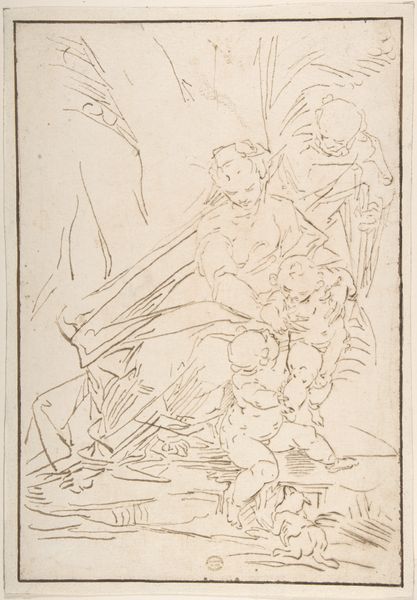
drawing, ink
#
drawing
#
baroque
#
figuration
#
ink
#
history-painting
#
rococo
Copyright: Public Domain
Editor: So, here we have "The Cruelties of Tiberius," a drawing in ink by Paul Egell, from around 1748. It definitely has a disturbing quality; all the figures seem caught in moments of suffering. How do you interpret this work? Curator: The visceral impact is certainly intended. It's a tableau of power, and power's abuse. Notice how the symbols cluster: the hanging figures, the overturned tables, the dominating presence of what must be Tiberius. The artist is building an emotional charge, connecting with the cultural memory of tyranny and the vulnerability of the body. How do these images resonate with our understanding of leadership, then and now? Editor: I hadn’t considered the symbols as cues for collective memory. So, it's not just a literal depiction of events, but a statement about power? Curator: Exactly. Consider the placement of Tiberius. He's physically elevated, almost detached, while the chaos unfolds. It speaks volumes about the separation between ruler and the ruled. Where do we see that distance reflected today, in our visual culture? Think about propaganda or the ways leaders are presented in media. Editor: I see what you mean! The idea of that distance – it's not just about historical events. The way those images circulate in our minds continues to shape our understanding of power. It's pretty intense, actually. Thanks for this enlightening observation. Curator: My pleasure. The work becomes a mirror reflecting our own relationship with these timeless themes of dominance and submission. It invites us to question the iconography that shapes our world.
Comments
No comments
Be the first to comment and join the conversation on the ultimate creative platform.
